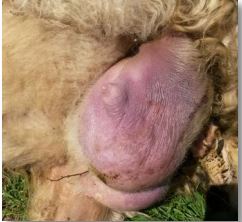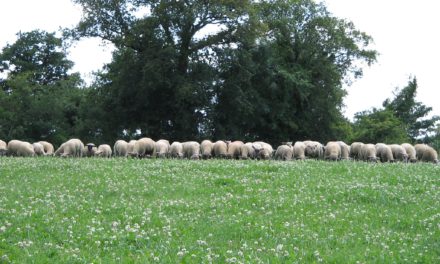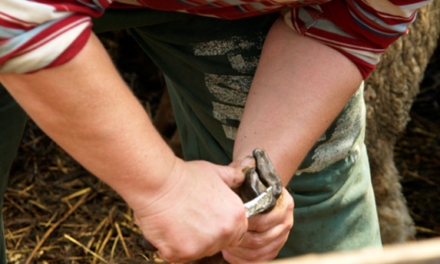This post is also available in:
![]()
![]()
![]()
![]()
![]()
Good machine-milking practices for prevention of mastitis
Solution name: Good machine-milking practices for prevention of mastitis
Aim: Guidelines aimed to prevent and control bacterial mastitis in sheep.
Description:
When mastitis outbreak occurs, it is important to identify the infected animals as soon as possible, and isolate them by creating separate groups, because they are potential reservoir of infection inside the flock. Moreover, culling is recommended for animals with chronic and/or antibiotic-resistance mastitis.
Milking is a critical phase in dairy farms for the onset and spread of mastitis; hence, it is necessary to pay attention on milking hygiene, including a proper milking routine with post-milking disinfection and the cleanliness of the milking parlour and milking machine.
Topic: health/management
Production: Dairy
Animal Category: Adult
Issue: Clinical mastitis (e.g. lesion in the udder, and altered milk condition) or subclinical mastitis (e.g. high somatic cell count). Milking machine management
Level of Solution: Practical
Country: Italy
How to implement it
MILKING ROUTINE
- It must be performed in a clean environment.
- Noises and sudden movements must be avoided as much as possible (small ruminants are particularly sensitive to stressful events).
- Checking the first milk jets (Strip-test) to detect the presence of any milk abnormalities (indicators of clinical mastitis).
POST MILKING TEAT DISINFECTION (POST-DIPPING)
- Post-dipping is an economic procedure in the milking routine for mastitis management; by disinfecting teat skin, the method prevents bacterial contamination in the udder.
- The reduction in number of bacteria on the teat skin is essential for preventing udder infections, as well as for its direct impact on milk quality.
- Disinfection must be carried out at each milking immediately once the milking unit is detached.
Properties of an ideal disinfectant:
-
- a wide spectrum activity,
- non-irritating and aggressive to the skin,
- added with emollients (e., lanolin) and moisturisers (i.e., glycerine),
- stable and persistent without leaving any residues in milk.
Techniques of disinfectant application:
-
- Immersion ensures complete disinfection of the teat but increases the risk of contamination, requiring the replacement of the disinfectant when this occurs.
- Teat spraying: less accurate, but faster and with a lower risk of contamination.
Recommendations:
-
- Use the dilutions indicated on the manufacturer’s instructions; a reduced concentration leads to the survival of some bacterial species and favours the selection of resistant bacteria, while a higher concentration does not improve efficacy but increases cost, the risk of residues in milk, and skin lesions.
- Alternate the type of disinfectant to avoid the selection of resistant bacteria.
- Store the product in well-closed containers.
- Clean the dispensers after each milking or during, when necessary.
- Observe the expiry date indicated on the label.
MILKING MACHINE MANAGEMENT AND HYGIENE
Several microorganisms, especially the biofilm forming bacteria (i.e., Pseudomonas spp.), find the ideal growing environment inside milking machine pipelines incorrectly washed (i.e., using contaminated water).
- The milking machine and equipment must be washed immediately after each milking following a proper cleaning procedure.
- Check the water temperature and the absence of abnormal odours, residues, and water in the pipeline during the washing cycle.
- Control the cleanliness of the milk receiver and the milking units.
- Evaluate the absence of deposits/incrustations and the cleanliness of the filters and gaskets through visual inspections monthly. (The presence of fat films, organic or mineral deposits of milk or water origin mean that water temperature and/or detergent concentration are inadequate. A black deposit in the liners indicates that these components must be replaced).
- When high somatic cell content and/or high total bacterial count is detected in bulk milk, it is recommended to check the effectiveness of cleaning procedures through the microbiological analysis of the water used for washing, of the rinsing liquid, and of the swabs taken from milking machine components (e., liners, claws, jetter cups, and milk receiver).
- Apply the periodical maintenance programme indicated by the milking machine manufacturer.
- Yearly check of potability and hardness of water used for washing.
ENVIRONMENTAL HYGIENE
Hygiene is an essential part in the reduction of environmental bacterial load and, consequently, in the prevention of intramammary infections, especially by environmental microorganisms.
A correct hygiene management of the farm also affects the hygienic-sanitary quality of productions.
Expected benefits
standardized approach for mastitis control and eradication, which allows for promoting optimal well-being of animals and economic benefits.
Prerequisites and/or limits (knowledge, training, capabilities, cost, management, facilities, equipment, etc.)
The use of lambing pens requires extra labor and initial costs with materials.
Some minor investments should be done in UV bulbs, related costs with energy and thermometers to monitor shed conditions.
Aspects such as temperature and humidity inside the shed are hard to control.
Cost Benefit analysis
The profitability of the application of these good practices is assured by the strong reduction of clinical and sub-clinical mastitis that largely counterbalances the increase of manpower and equipment. Larger incomes may be expected also from the increase in milk quality when a quality-based payment system exists.
Sustainability analysis
Negative impacts on the environment due to the large use of water and disinfectants may be mitigated by reducing waste. The main positive impact is expected by the reduction of the use of antibiotics.
Important positive impacts are expected on more leisure for the farmer, the animal welfare, and on the farmer’s “image”.







